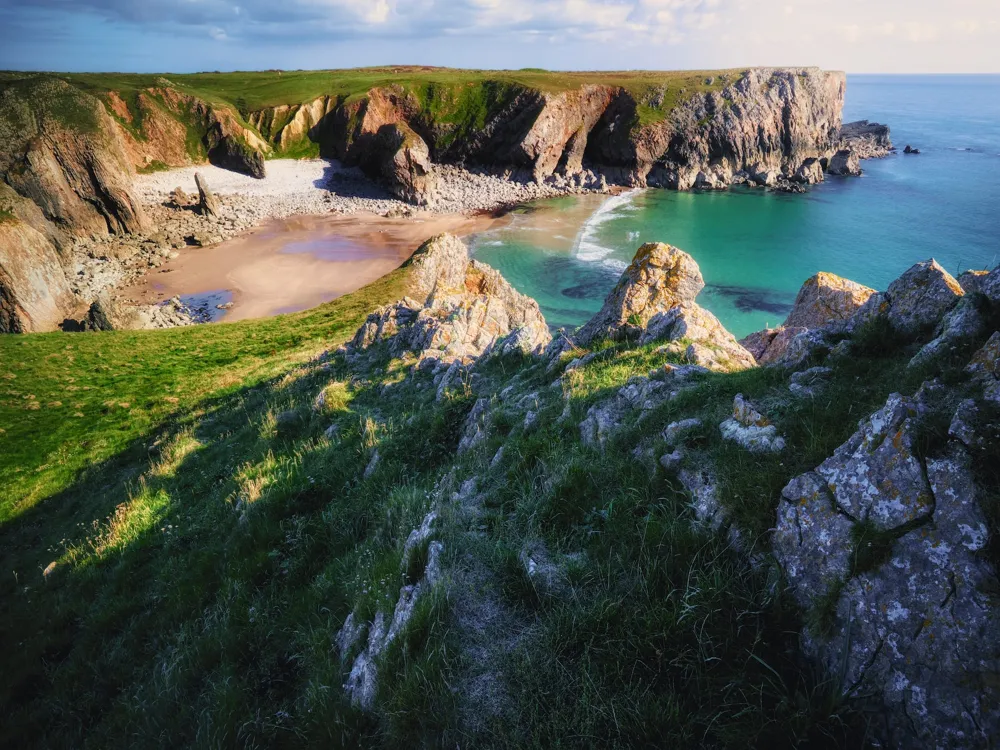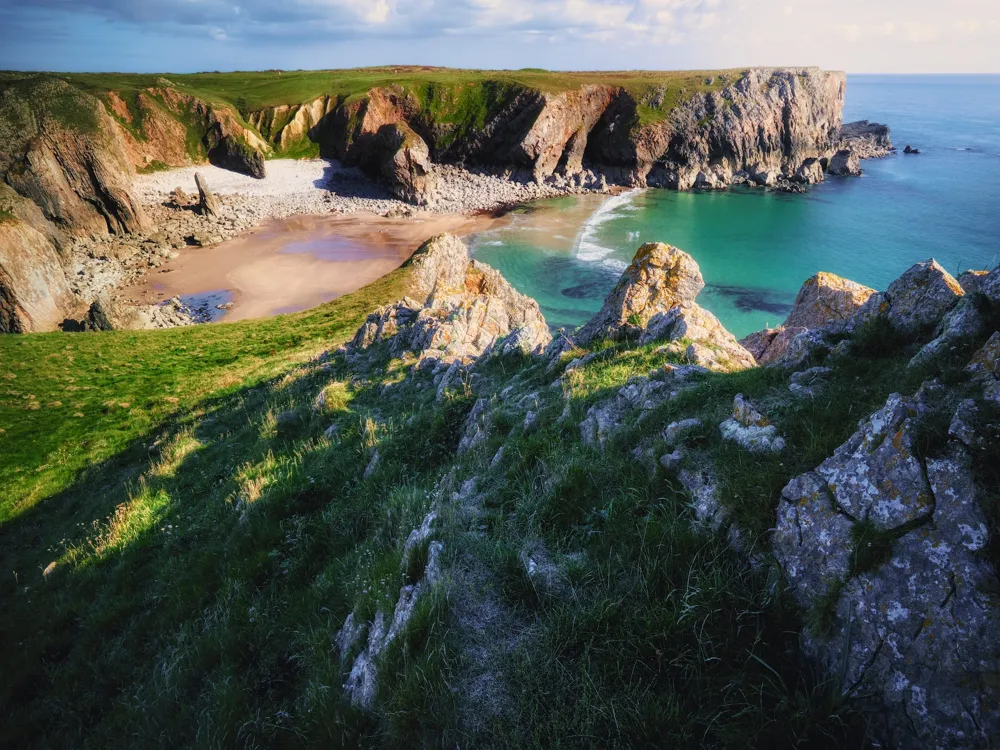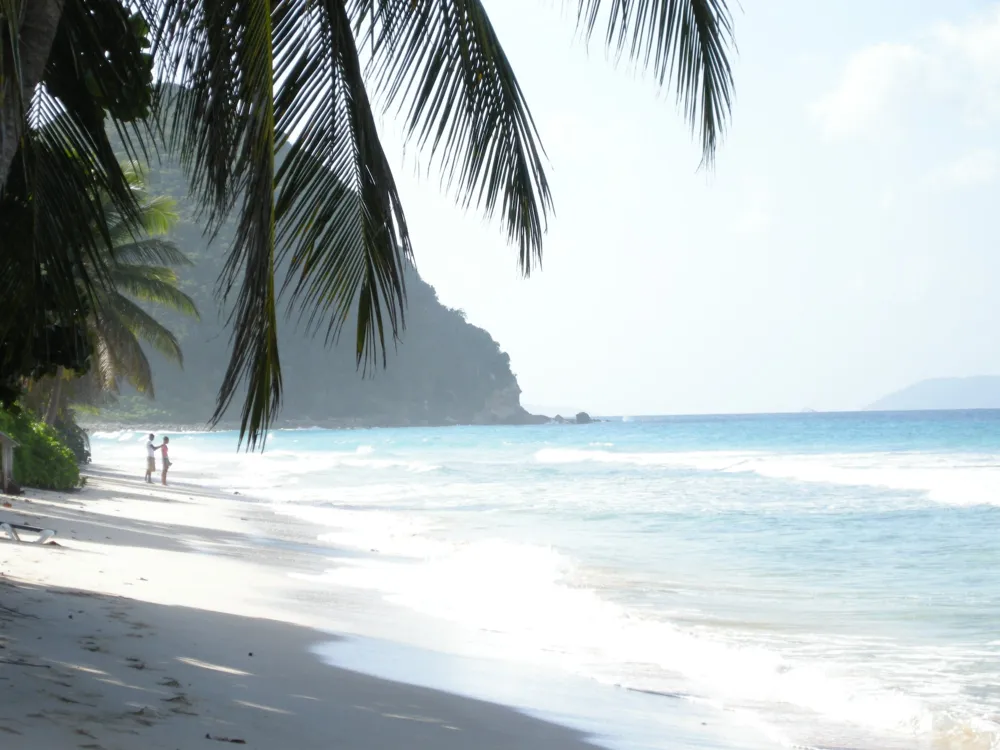Halong Bay, a UNESCO World Heritage Site located in the Quang Ninh Province of Vietnam, is a spectacular seascape sculpted by nature. It spans an area of around 1,553 square kilometers and is famed for its emerald waters and thousands of towering limestone islands topped with rainforests. The name 'Halong' translates to 'where the dragon descends into the sea,' and the bay's mystic beauty is shrouded in folklore and legend. This natural wonder has fascinated travelers for centuries with its breathtaking scenery, geological formations, and rich biodiversity. Exploring Halong Bay takes you on a journey through time, unveiling the secrets of its formation over 500 million years. The region has undergone various geological changes, and the bay's current form is a result of millions of years of erosion and weathering. The towering limestone pillars and islets are the most distinctive features, many of which are hollow, with enormous caves. Each island and cave has its own unique story, contributing to the enchanting allure of Halong Bay. The local culture is deeply intertwined with the bay, with numerous fishing villages dotting the landscape. These floating villages are a testament to the adaptability of the human spirit, with communities thriving in harmony with the rhythm of the sea. The bay is not only a natural wonder but also a cultural treasure, offering a glimpse into the lives of the local fishermen and their age-old traditions. Halong Bay's biodiversity is as diverse as it is unique, with a rich ecosystem that includes tropical evergreen, oceanic, and sea shore bio-systems. It's home to 14 endemic floral species and about 60 endemic faunal species. The mesmerizing scenery and the serene atmosphere make Halong Bay a perfect destination for those seeking tranquility and a connection with nature. The architecture of Halong Bay is not about man-made structures but rather the artistry of nature. The bay's landscape is a majestic architectural masterpiece sculpted by the hands of nature over millions of years. The limestone karsts and islets rising from the sea form a natural architecture that challenges the grandeur of human-made structures. Each formation is a work of art, shaped by the elements, and each tells a story of geological processes and time. The most famous feature of Halong Bay's natural architecture is its caves and grottoes. These spectacular formations are hidden within the islands, offering a world of mystery and wonder. The Sung Sot Cave, or the 'Surprise Cave', is a prime example. Its interior seems like a royal palace and is a testament to the creative power of nature. The stalactites and stalagmites inside the caves have taken shapes that stimulate the imagination, with locals naming them after animals, legends, or everyday objects. Another aspect of Halong Bay's architecture is the way it seamlessly blends with human life. The floating villages and fish farms represent a symbiotic relationship between humans and nature. The design of these floating homes and structures is a direct response to the environment, crafted to withstand the conditions of the bay while respecting its natural beauty. The biodiversity in Halong Bay also plays a crucial role in its natural architecture. The mangroves, sea grass beds, coral reefs, and tropical forests contribute to the ecological balance and add to the scenic beauty of the bay. This interplay between the living organisms and the physical structures of the bay creates a dynamic and ever-evolving architectural landscape. The ideal time to visit Halong Bay is during the spring (March to May) or autumn (September to November) when the weather is pleasant, and the skies are clear. Avoid the monsoon season from June to September due to heavy rains and possible storms. Selecting the right cruise is crucial for your Halong Bay experience. Options range from budget to luxury cruises. Consider the length of the trip, the route, and the onboard facilities. Read reviews and check for sustainable and responsible tourism practices. Essentials include light and comfortable clothing, swimwear, sun protection, insect repellent, and a camera. For cave visits and treks, bring suitable footwear. In winter, pack a light jacket as it can get chilly. Halong Bay's ecosystem is delicate. Avoid littering, respect wildlife, and be mindful of your environmental impact. Choose eco-friendly tours and activities that promote conservation. Engage with the local culture and try the regional cuisine. Seafood is a specialty, with dishes like squid sausage, grilled oysters, and Halong Bay fish being must-tries. Respect the local customs and traditions during your visit. Halong Bay is accessible from Hanoi, the capital city of Vietnam. The most convenient way to reach Halong Bay is by road, with a journey time of about 3 to 4 hours. Tourists can hire a private car, take a shuttle bus, or join a guided tour. Another option is to travel by seaplane from Hanoi, which offers a stunning aerial view of the bay. The nearest airport is Cat Bi International Airport in Hai Phong, from where you can take a car or bus to Halong Bay. For a more scenic route, consider taking a train to Hai Phong and then a ferry to Halong Bay.Overview of Halong Bay
Architecture of Halong Bay
Tips When Visiting Halong Bay
Best Time to Visit
Choosing a Cruise
What to Pack
Respecting the Environment
Local Culture and Cuisine
How To Reach Halong Bay
Ho Chi Minh Monument
Halong Bay
₹ 15,260 onwards
View halong-bay Packages
Halong-bay Travel Packages
View All Packages For Halong-bay
Top Hotel Collections for Halong-bay

Private Pool

Luxury Hotels

5-Star Hotels

Pet Friendly
Top Hotels Near Halong-bay
Other Top Ranking Places In Halong-bay
View All Places To Visit In halong-bay
View halong-bay Packages
Halong-bay Travel Packages
View All Packages For Halong-bay
Top Hotel Collections for Halong-bay

Private Pool

Luxury Hotels

5-Star Hotels

Pet Friendly






















